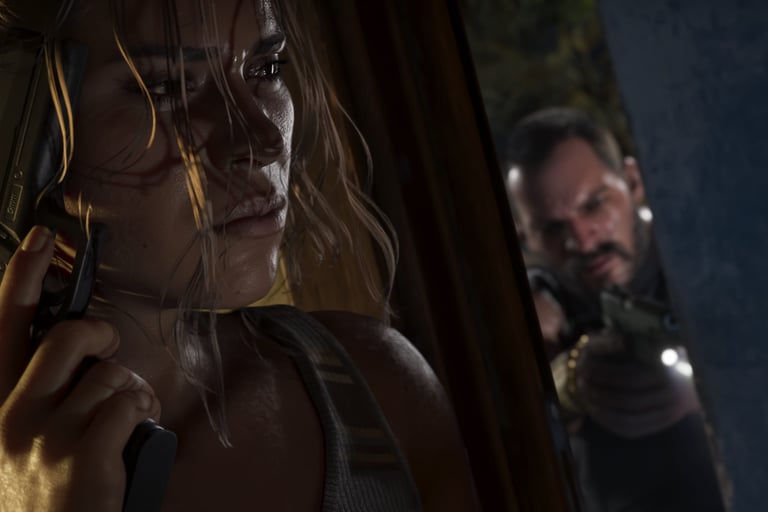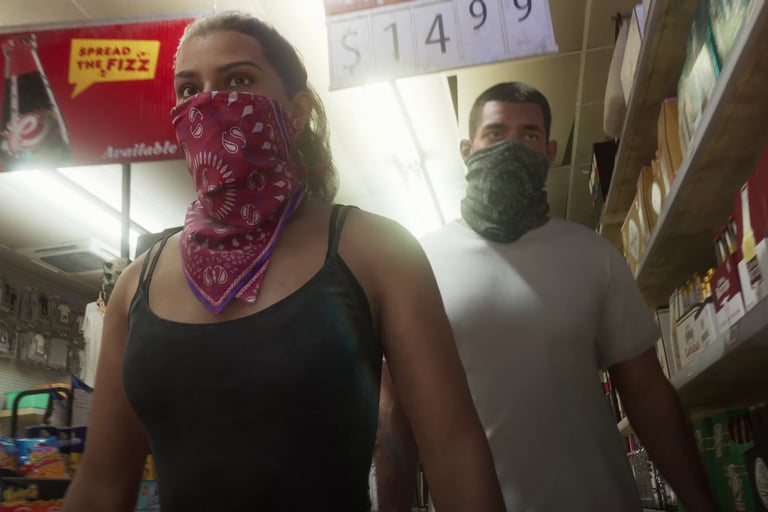What to Expect from GTA 6: The Next Chapter in Gaming
7/25/20253 min read
Partners in Crime: Exploring Character Duality and Narrative Tension in GTA VI
In the neon haze of Vice City’s criminal underworld, Grand Theft Auto VI introduces a bold narrative evolution: a story centered not just on one antihero, but on a pair of them. As Rockstar Games returns with its most ambitious open-world epic yet, the dynamic between its two protagonists — Lucia and her unnamed male partner — redefines what it means to survive, trust, and thrive in a world where loyalty is currency and betrayal is inevitable.
GTA has always danced on the line between satire and chaos. But GTA VI dares to ask a deeper question: What happens when the biggest heist of your life depends on someone who could destroy you?
Gameplay Mechanics and Character Dynamics
At its core, Grand Theft Auto VI retains the open-world freedom and social commentary that the series is known for — but layers in a new level of intimacy and narrative complexity through its dual-protagonist system.
Players can switch between Lucia and her partner, each with unique perspectives, story beats, and missions. But unlike GTA V’s trio of loosely connected criminals, this duo shares a far more intense and personal connection — one built on survival, mutual dependence, and possibly even love.
Heists, shootouts, and story missions shift tone depending on who you control.
Their backstories influence not just dialogue, but the player’s moral compass as the story unfolds.
Gameplay reflects partnership mechanics — coordinated thefts, split-second trust decisions, and dual-role missions that demand communication and timing.
This isn’t just two characters sharing the spotlight. It’s one narrative, told through two fractured lenses — and the tension that creates is electric.
Narrative Themes: Trust, Survival, and Modern Vice
While previous GTA entries satirized American life through individual lenses, GTA VI injects emotional depth by tethering its protagonists together. Lucia, shown in trailers as a hardened, street-smart leader, contrasts with her partner’s more measured, possibly reluctant criminal presence. The result? A volatile blend of loyalty and friction, a narrative driven not just by the world around them, but by the relationship between them.
This character-driven approach adds:
Interpersonal conflict that evolves over time
Dialogue trees and decision points that may influence their bond
A grounded lens through which Rockstar explores themes of poverty, inequality, violence, and identity
And in the world of GTA, where trust is a liability, that emotional edge raises the stakes — narratively and mechanically.
Setting: Vice City Reimagined
Vice City returns in all its sun-soaked, synth-drenched glory — but this isn’t a nostalgia trip. This is modern Vice, a city rotting beneath its luxury, divided by class, crime, and corruption.
From dense urban sprawl to swampland outposts, the world reacts dynamically to your choices, notoriety, and reputation as a duo. Police AI, civilian responses, and even factional control shift based on the chaos you leave behind — or the alliances you build.
This vibrant sandbox is not just a backdrop — it’s a character of its own, evolving as your story unfolds.
Conclusion: Two Voices, One Story
GTA VI’s introduction of dual protagonists is more than a gameplay gimmick — it’s a narrative risk that deepens everything from character interaction to moral tension. It’s a love story wrapped in violence, a crime saga shaped by two conflicting identities, and a brutal reminder that even in a world of fast money and faster consequences, the person next to you can be both your ride-or-die... and your undoing.
For fans of layered storytelling, character-driven drama, and the chaotic beauty of the GTA universe — this is the next evolution.
Because sometimes, to pull off the perfect crime…
you need someone who knows exactly how to destroy you.










Gaming
Your source for game news and reviews.
FOR BUSINESS
© 2025. All rights reserved.
